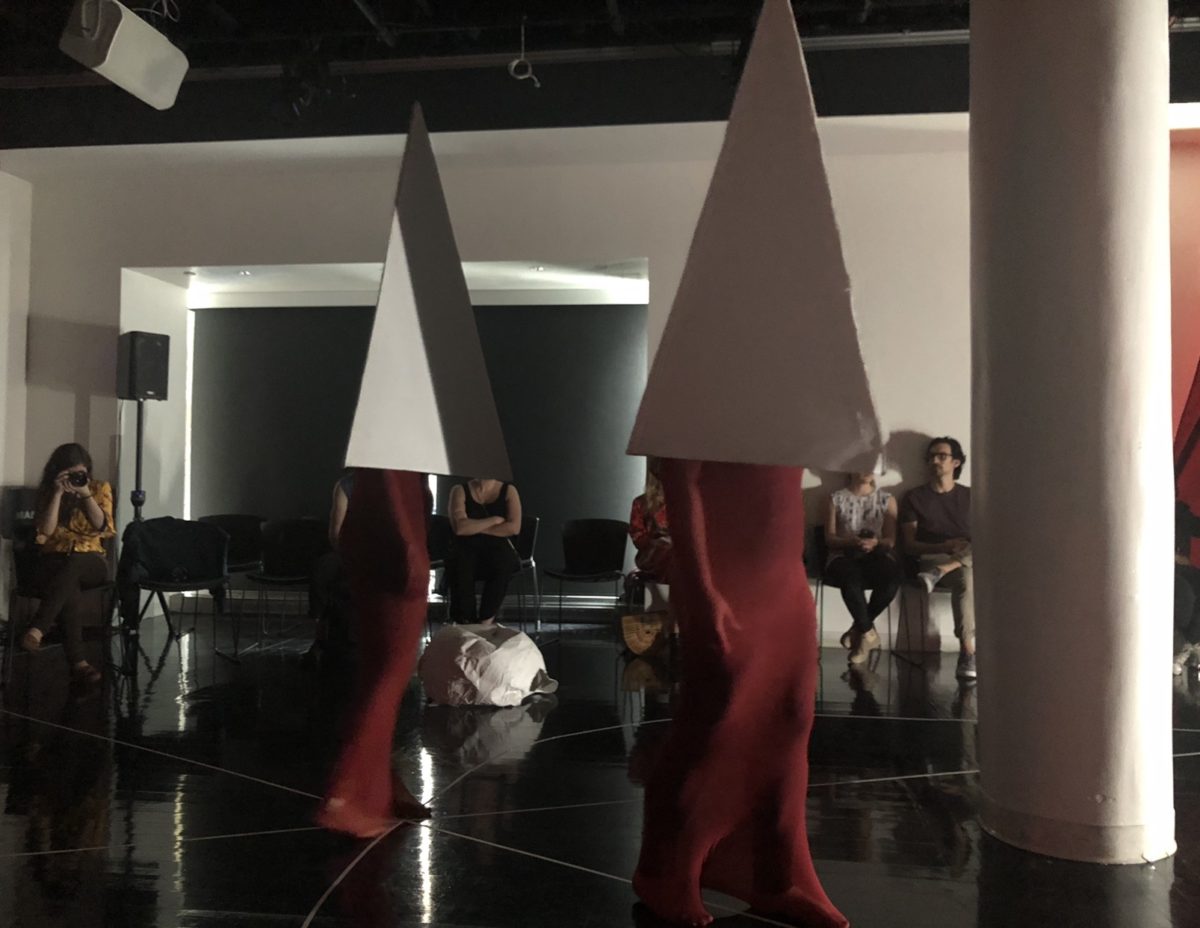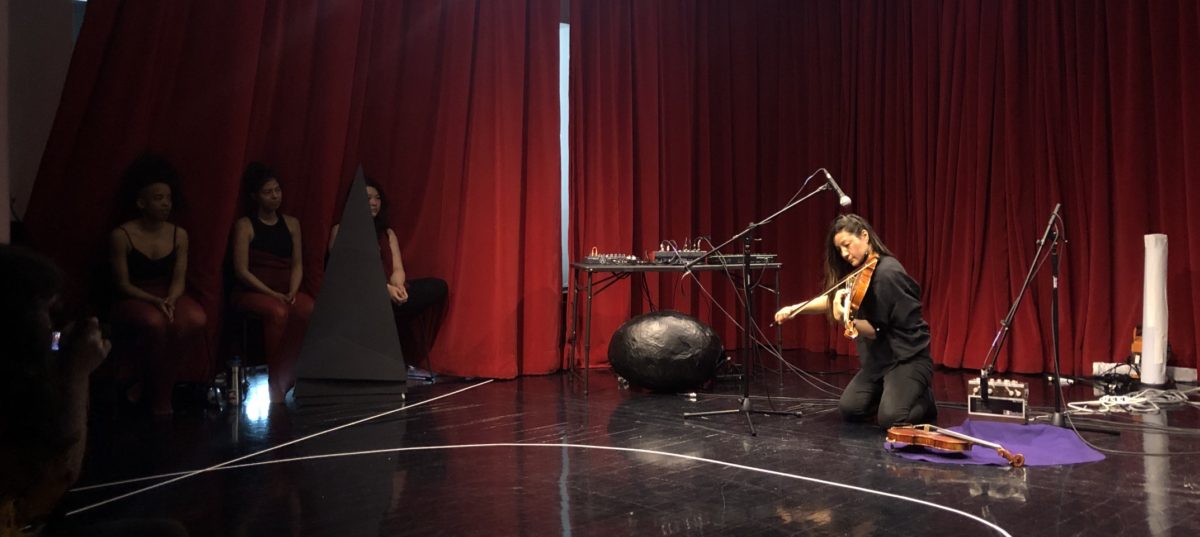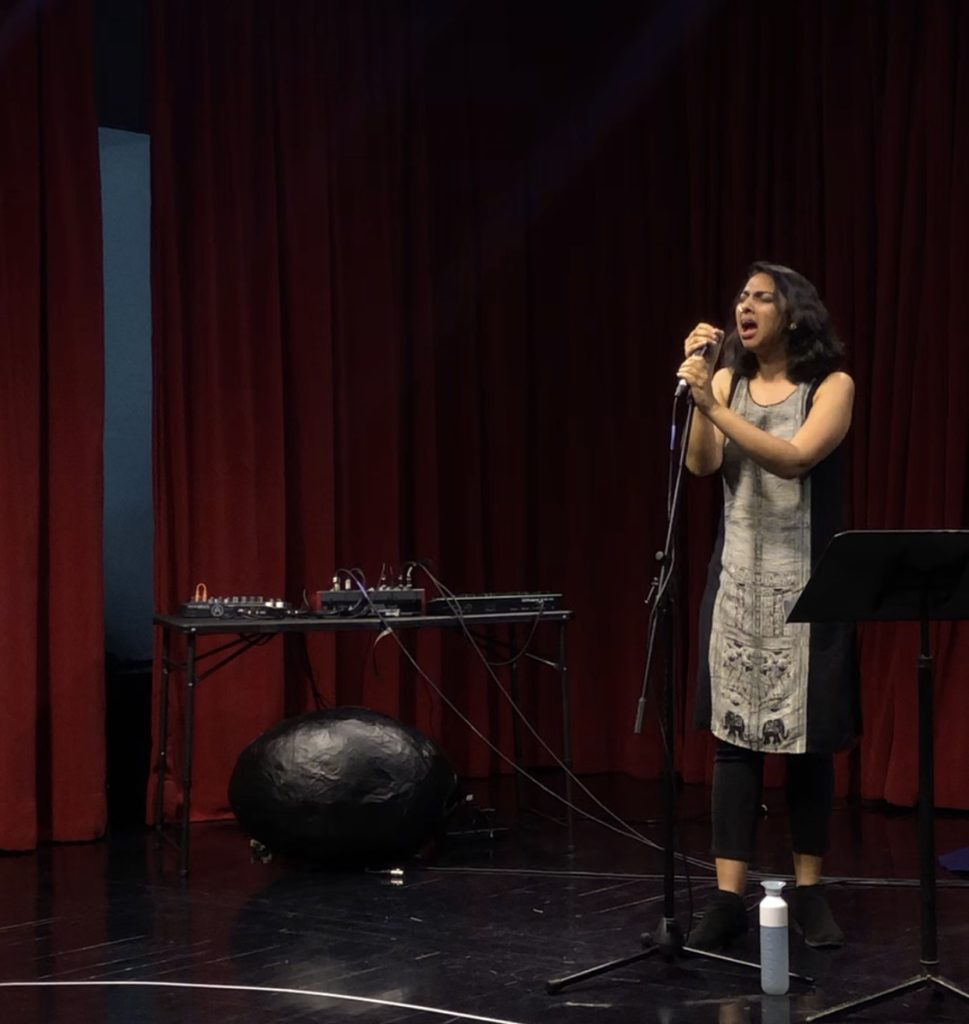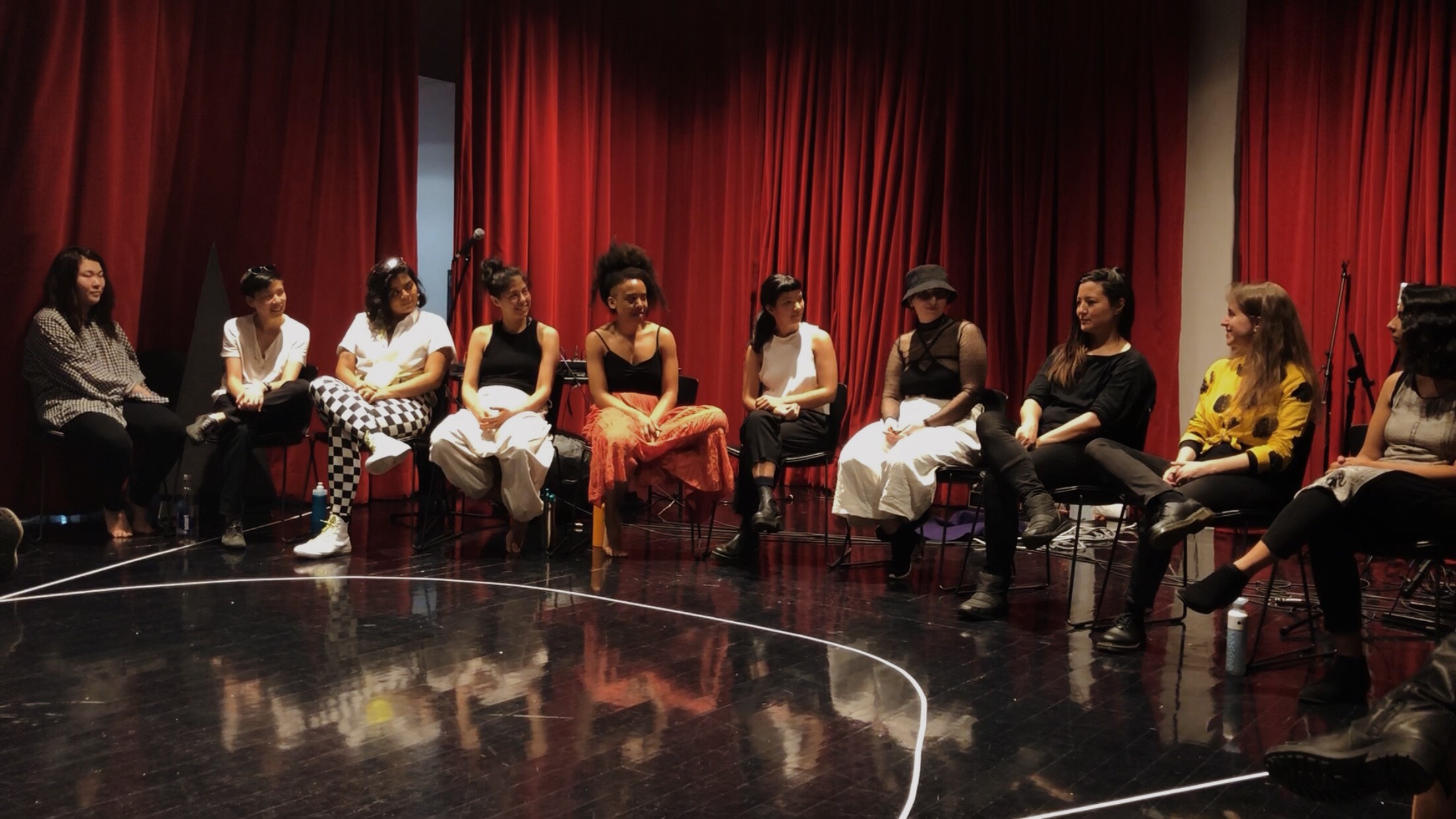This article has been updated, as requested by the New School’s public relations spokesperson, to state that the Women Between Arts event was a production by the College of Performing Arts. A previous version of this article stated that the event was held by the Mannes School of Music, which is housed within CoPA. This article has also been corrected to accurately represent Lilleth Glimcher as a multidisciplinary artist; they are not a multi-instrumentalist, as previously stated.
The lights dimmed inside the CoPA Glassbox Performance Space on West 13th Street for an afternoon of multifaceted art forms. Three silhouettes emerged from the shadows as audience members entered and took their seats. The small room, with deep red curtains, frequently featured performances by avant-garde musicians and artists every Tuesday and Saturday.
Saturday, April 13 was no exception.
Women Between Arts is a series curated by artist, musician, theater director, and writer Luisa Muhr. Each event takes place at the Mannes School of Music and is designed to showcase the works of interdisciplinary, non-binary, and womxn-identifying creators, according to the series’ mission statement. At the conclusion of the event, each artist and/or group is allotted a talk-back session, after their 15 minute sets, to discuss their work.
That afternoon, the first performance was a combination of dance and song. Three dancers wearing monochromatic costumes walked in circles as everyone in the room was transported into the “embodied healing ritual” of multidisciplinary artist Lilleth Glimcher and her collaborators: singer Stefa Marie Alarcon and musician Dominique Brillon. Glimcher played ukulele and harmonized vocally with Alarcon singing, and Brillon played synthesizer. The dancers changed into cardboard triangles with red mesh outfits underneath and swayed to the turbulent beats and soft melodies of the music.

Combining interpretive dance with haunting vocals, Glimcher performed along with You Are Here, a nonprofit organization that creates safe spaces for queer, LGBT, nonbinary, and black and indigenous artists and musicians of color.
Composer, director, and violinist Leyna Marika Papach was next to seize the spotlight.
Kneeling in the center of the ground-level stage, Papach played the violin over sampled piano sounds emanating from a small amplifier. The vibrato of her violin transcended through the small room as she experimented with lingering pauses, echoing notes, and variation in rhythm — dipping and gliding her bow through the conclusion of the set.

Improvisational artist and avant-jazz singer Amirtha Kidambi performed fifteen minutes of experimental vocals. With improvised vocals, high pitched notes, whistling, and hushed whispers, Kidambi used her hand as a tunnel to transmit various sounds into her microphone. While climbing up and down soprano scales, humming, gasping, and blowing air into the microphone, Kidambi experimented with noise and her ability to improvise.

After Kidambi concluded her performance, Muhr introduced herself to the audience, and discussed the origin of Women Between Arts.
“I started this for women and non-binary people who work as interdisciplinary artists. I believe that there needs to be more platforms in the city. This has been happening since October 2017, and we’ve featured some of the most pure artists in New York and also international, interdisciplinary artists,” Muhr said.
Muhr then led a discussion about the concept of space, highlighting that one thing all of the artists had in common was how they utilized the small space in order to perform. “The thing about sound is that it makes visible the space between us,” Glimcher said.
Her collaborator Brillon added, “Sound is both so private and public in shared experiences. For women and non-binary folks, it’s sacred to have the protection of a private space and a public space, since you can’t always trust your public spaces.” Having equal access and areas for all womxn-identifying artists to safely perform, experiment, and practice avant-garde music were common themes throughout the discussion.
Musicians spoke to the Free Press after the event and offered advice for young female-identifying innovators and creatives.
“Make your own projects,” said Glimcher. “Don’t wait for anyone else to give them to you. If you feel strongly and your work is fulfilling, create it, but as women we often feel like we have to say yes to everything. Be careful what you say ‘yes’ to.”
Muhr stressed the importance of self-assurance and finding fellow artists who support one’s best intentions: “Spend time alone, figure out what you really want. It’s important as womxn to choose your collaborators wisely.”
The next Women Between Arts event will be held at Mannes on Saturday, May 11. It will feature unconventional music and eccentric genre exploration. “I’ve learned in my career that music is truly beyond the body,” Papach told the Free Press, “and that every artist should value what they have to give.”







